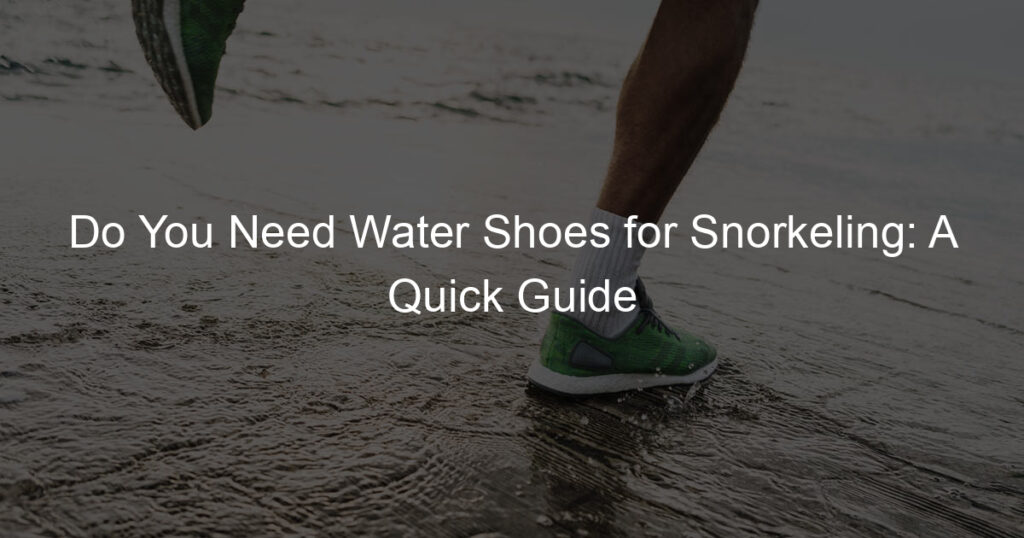Snorkeling is a popular water activity that allows you to explore the wonders of the underwater world.
Many people wonder do you need water shoes for snorkeling. The answer to this question depends on the specific conditions and environment in which you’ll be snorkeling.
In some situations, water shoes can be beneficial, providing protection and comfort for your feet.
For example, if you are snorkeling in an area with sharp rocks, coral, or shells, water shoes can protect your feet from cuts and scrapes.
Also, they offer protection against hot sand and rocky surfaces when walking to and from your snorkeling spot.
However, if you are using snorkeling fins, your feet are already protected, and water shoes may not be needed.
Key Takeaways
- Water shoes can provide protection and comfort during snorkeling in certain situations
- Snorkeling fins already offer foot protection, potentially reducing the need for water shoes
- Consider the environment, conditions, and personal preferences when deciding on using water shoes for snorkeling
Do You Need Water Shoes for Snorkeling
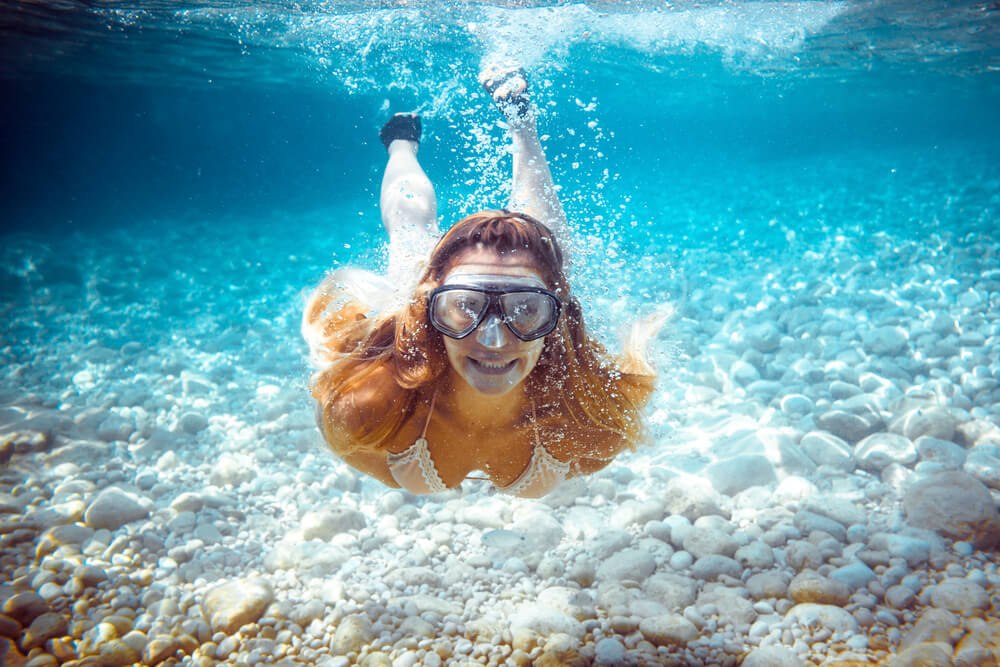
When snorkeling, it is essential to protect your feet from potential hazards underwater. Wearing water shoes can make a significant difference in ensuring your safety, comfort, and overall enjoyment of the experience.
One reason to consider water shoes for snorkeling is their ability to safeguard your feet against sharp objects and rough surfaces. Coral reefs and rocky areas can have jagged edges or spiky organisms that could cause injury if you were to step on them barefoot.
By wearing water shoes, you reduce the risk of sustaining cuts or abrasions on your feet.
It’s also important to note that water shoes provide extra support and stability on slippery surfaces. When entering or exiting the water, algae-covered rocks or wet sand can be quite slippery.
Water shoes give you more traction and reduce the chance of slipping or falling, making your entrance and exit process much smoother and safer.
Apart from protection and stability, water shoes can also enhance your comfort during snorkeling sessions. Many people find that wearing water shoes helps to avoid chafing caused by sand and saltwater.
Moreover, water shoes often have a mesh material that allows the sand and water to drain easily, keeping your feet feeling light and comfortable throughout your snorkeling adventure.
While water shoes can be beneficial, it’s important to remember that they are not a substitute for fins. Fins are essential for efficient movement in the water and can help conserve energy.
If you are wearing fins, your feet will already be protected. Nevertheless, water shoes are still a useful accessory for walking in and out of the water or if you plan to explore shallow areas without fins.
Water shoes can enhance your snorkeling experience by providing protection, stability, and comfort. While not a replacement for fins, they serve as an excellent accessory for different aspects of your underwater adventure.
Types of Water Shoes for Snorkeling
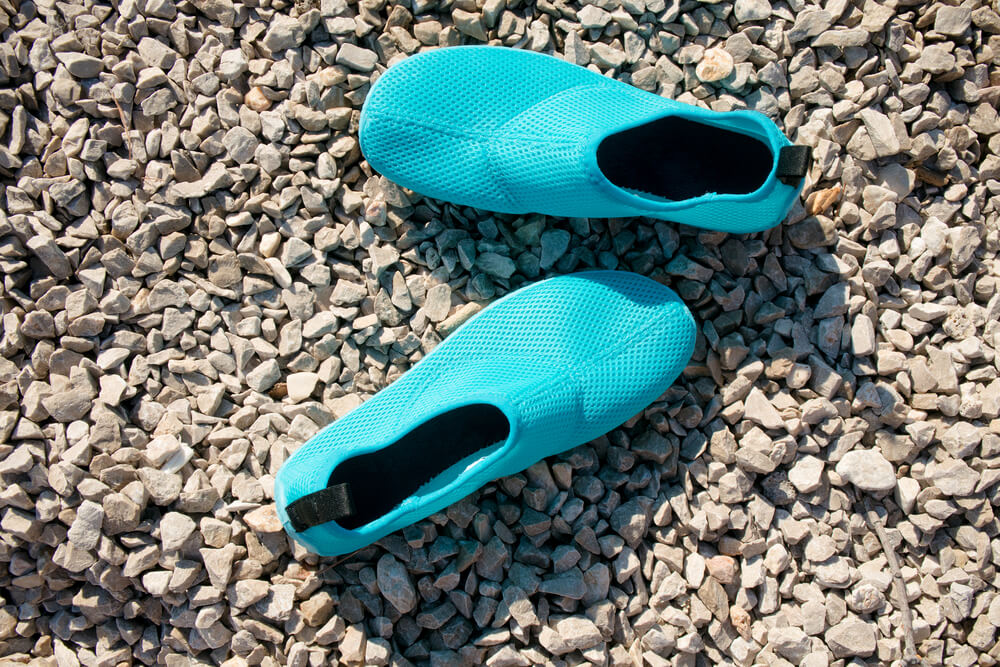
While snorkeling, having the right water shoes can make or break your experience. There are several types of water shoes, each designed to cater to different needs and preferences.
In this section, we will explore three popular types, namely: mesh water shoes, neoprene water shoes, and rubber sole water shoes.
Mesh Water Shoes
Mesh water shoes are lightweight and offer excellent breathability, making them ideal for snorkeling in warm waters. The breathable mesh material allows water to flow in and out of the shoes easily, preventing your feet from feeling too stuffy as you snorkel.
Moreover, mesh water shoes dry quickly once you leave the water, providing additional comfort during your adventure.
Yet, it’s important to note that mesh water shoes may not provide maximum protection against sharp objects, so be cautious of your surroundings while snorkeling.
Neoprene Water Shoes
Neoprene water shoes are designed for excellent protection and insulation. Made from the same material as wetsuits, these water shoes guard your feet against sharp rocks, coral, and other underwater hazards.
Neoprene water shoes keep your feet warm in colder waters, making them a perfect choice for snorkelers who venture into colder environments.
Additionally, they are lightweight and offer a snug, comfortable fit. Keep in mind that neoprene water shoes might take longer to dry than other types, so consider this when planning your snorkeling activities.
Rubber Sole Water Shoes
Rubber sole water shoes provide the best grip on slippery surfaces, making them suitable for entering and exiting the water in areas with slick rocks or unstable footing.
These shoes are usually more durable than other types and offer excellent protection for your feet against sharp objects. Rubber sole water shoes also come in various styles and designs, allowing you to choose a pair that best suits your preferences.
They may be less breathable than mesh water shoes, so if breathability is a top priority for you, consider the other options.
Benefits of Wearing Water Shoes while Snorkeling

Foot Protection
Wearing water shoes while snorkeling can protect your feet from sharp objects found in marine environments, such as coral reefs and shells. You can avoid stepping on jagged edges or spiky organisms that may cause injury to your bare feet.
As you enter the water, water shoes can also shield your feet from debris and hot temperatures.
Comfort
Water shoes can provide a comfortable and secure fit, allowing you to enjoy your snorkeling experience without worrying about your footwear.
Some water shoes are made of neoprene fabric, which works similarly to a wetsuit by trapping a small layer of water between your foot and the shoe.
This creates a warm sensation for your feet, which can be especially helpful in cooler water temperatures.
Improved Traction
Aside from protection and comfort, water shoes can also improve your traction in slippery or wet conditions. The soles of water shoes are designed to grip onto wet surfaces, giving you better stability and balance while entering and exiting the water or navigating rocky shorelines.
This can help prevent slips and falls, contributing to a safer snorkeling experience.
Remember that using water shoes may not be suitable while wearing fins, so evaluate the need for both based on your snorkeling environment and preferences.
Choosing the Right Water Shoes for Snorkeling
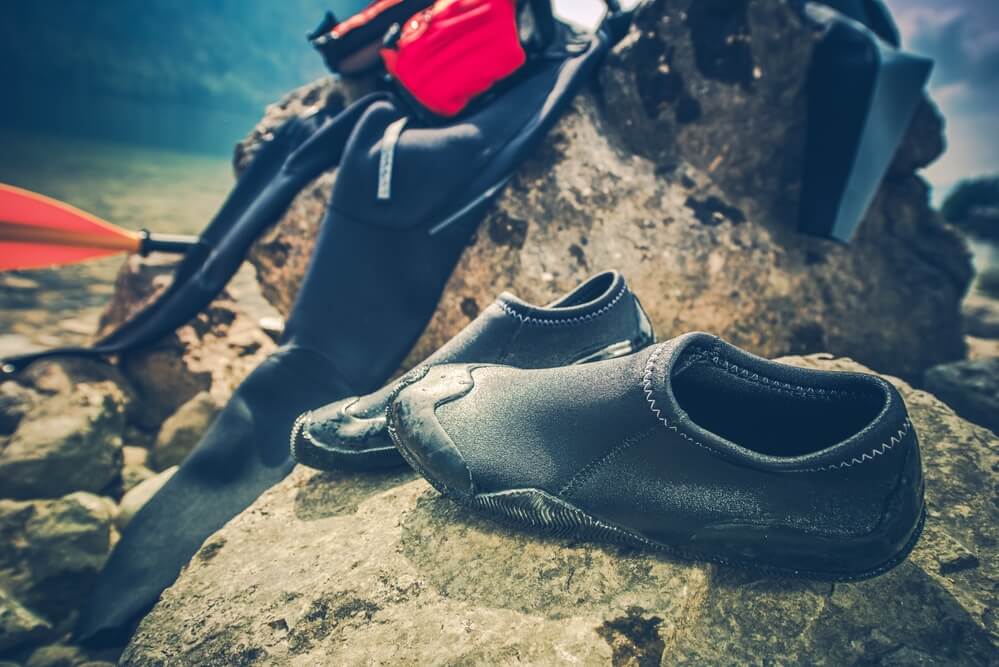
When snorkeling, the right water shoes can enhance your experience and protect your feet. To choose the best pair for your needs, consider the following factors: size, material, and grip.
Size Considerations
A proper fit is crucial when selecting water shoes for snorkeling. Shoes that are too tight may cause discomfort and restrict blood flow, while those that are too loose can come off while swimming.
To find your perfect pair, measure your foot’s length and width and refer to the manufacturer’s sizing chart. If you’re in between sizes, opt for the larger size for a more comfortable fit.
Material Selection
The material of your water shoes will significantly impact their performance and durability. Commonly used materials for water shoes include neoprene and mesh.
Neoprene is a popular choice due to its excellent water resistance, insulation properties, and flexibility, making it comfortable to wear for extended periods.
Mesh is breathable and dries quickly, ensuring your feet remain comfortable and dry after getting out of the water. Look for water shoes made from high-quality materials that will withstand the wear and tear of snorkeling activities.
Grip and Traction
Good grip and traction are essential to prevent slipping on wet and rocky surfaces while snorkeling. Look for water shoes with thick, durable soles that offer excellent traction on various terrains.
Further, consider shoes with toe guards for extra protection against sharp rocks and coral.
By taking the time to choose the right pair of water shoes for your snorkeling adventures, you can enhance your overall experience and protect your feet from potential injuries.
Maintenance and Care of Water Shoes
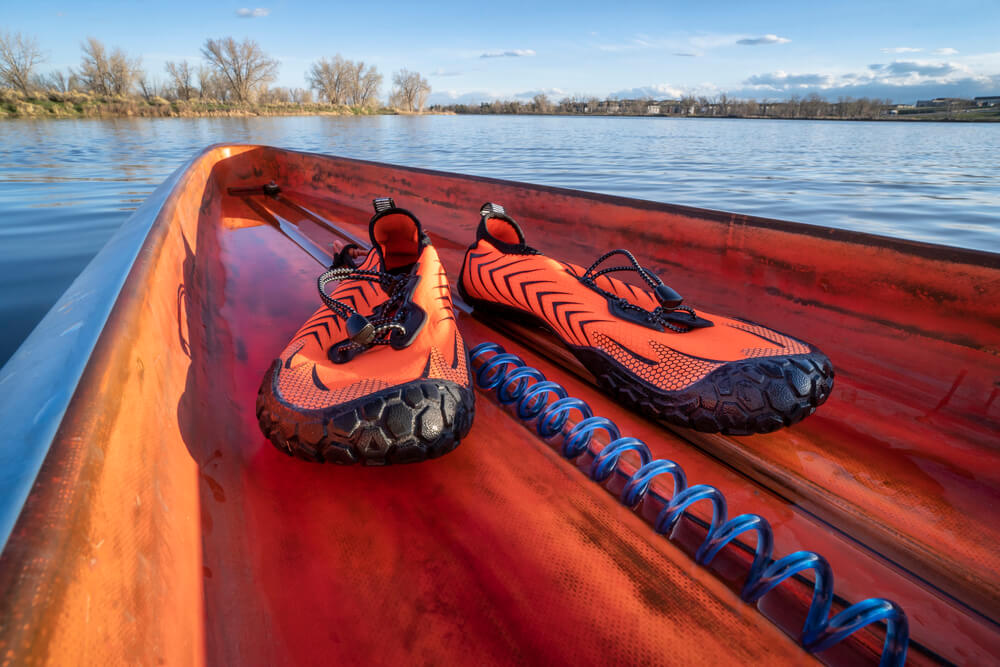
Taking proper care of your water shoes will help them last longer and ensure they continue to provide protection while snorkeling. First, always rinse your water shoes with fresh water after each use, especially if you have been in saltwater.
Salt and other debris can degrade the material over time, so thorough rinsing can prevent damage.
Allow your water shoes to air dry completely before storing them. Never store wet water shoes in a closed container or bag, as this can lead to mold and mildew growth.
Proper drying will help them maintain their shape and prevent odors.
Inspect your water shoes regularly for any signs of wear or damage. Check the soles for any tears or holes, as well as the stitching.
If you notice any damage that could compromise their performance, consider replacing them.
Lastly, avoid exposing your water shoes to harsh chemicals or direct sunlight for extended periods. Prolonged exposure can cause the materials to weaken and degrade more quickly.
By following these simple care tips, you can extend the life of your water shoes and ensure they remain comfortable and effective during your snorkeling adventures.
Conclusion
As you consider your snorkeling adventures, it’s important to evaluate the need for water shoes based on your specific circumstances.
In areas with sharp rocks, coral, or shells, water shoes can protect your feet from cuts and scrapes while also providing extra grip on slippery surfaces for easier entry and exit from the water.
When planning your snorkeling trips, consider the location and any potential hazards, such as rough or rocky areas on the shore, which could affect your decision to wear water shoes.
Remember that not all snorkel tours require shoes, but having them can enhance your overall experience and provide additional comfort and safety during your underwater adventures.
Your decision to wear water shoes for snorkeling largely depends on the environment and your personal preferences. Armed with this information, you can confidently make the best choice for your next snorkeling excursion, ensuring a safer and more enjoyable outing.
Frequently Asked Questions
What type of footwear is recommended for coral reefs?
When snorkeling around coral reefs, it’s important to protect your feet from sharp and potentially dangerous objects. Water shoes with a thick sole and good grip are a suitable option, as they provide protection while still allowing you to swim comfortably.
Another option is to wear reef-safe fins that offer a barrier between your feet and the coral. However, always practice caution and avoid stepping on or touching coral to protect the delicate ecosystem.
Are water shoes necessary for rocky beaches?
Water shoes can be particularly helpful when entering and exiting the water on rocky beaches. They provide protection from sharp rocks and help improve your grip on slippery surfaces.
While not always necessary, water shoes can certainly make your experience more comfortable and safe on rocky beaches.
Should you wear something on your feet during snorkeling?
Whether or not to wear footwear during snorkeling depends on personal preference and the environment in which you’ll be snorkeling. If you aren’t wearing fins and will be in an area with sharp objects, water shoes can provide protection and support.
On the other hand, if you’re snorkeling in a sandy area or wearing fins, you might prefer to go barefoot or wear water socks for minimal protection.
Do water shoes work well with fins?
Typically, water shoes are not designed to be worn with fins. Snorkeling fins are designed to be worn on bare feet or with thinner neoprene fin socks for a secure and comfortable fit.
Wearing water shoes with fins might cause discomfort and reduce their efficiency in propelling you through the water. If you need extra foot protection, consider using fins with built-in foot pockets designed for added protection and comfort.
Is it advised to wear water shoes in the ocean?
Wearing water shoes in the ocean can be beneficial for protecting your feet while entering and exiting the water and when snorkeling in areas with potential hazards like sharp objects.
However, if the ocean floor is predominantly sand and you’ll be wearing fins, there may be no need for water shoes. Ultimately, your choice of footwear will depend on the specific conditions and your personal preferences.
Any top suggestions for snorkeling footwear?
When choosing snorkeling footwear, consider factors such as the environment, your activity level, and your budget.
Some popular options include:
- Water shoes: Ideal for protection and support in shallow water and rocky areas.
- Reef-safe fins: Designed to provide protection and propulsion without harming the coral.
- Water socks: Thin, flexible, and offer minimal protection while preserving the feeling of being barefoot.
- Neoprene fin socks: Provides added comfort and protection when used with snorkeling fins.
Consider these suggestions and choose the most appropriate footwear for your snorkeling adventure.

